
The two tweets above were shared three weeks apart. They show how Portland and Paris have tried to reduce driving around schools to improve safety, air quality, and livability in general. I thought it’d be fun to compare them.
Let’s start with Portland…
Portland
When Sam Balto published his photos back in November, neither of us knew the Portland Bureau of Transportation (PBOT) even had a School Streets program. There was no public statement either of us could recall (and we both follow these things very closely). Turns out it was a pilot program and the only folks in on it were PBOT and the participating schools. So I asked the city to tell us more about it.
According to PBOT Communications Director John Brady, Portland’s pilot lasted from October 6th through November 19th and involved six schools: Astor, Peninsula, Martin Luther King Jr and Beach elementary schools; and Kellogg and Sellwood middle schools.
A flyer sent to each school and its neighbors defined the School Street concept in very simple terms as, “a local access-only block or two beside a school that reduces the number of cars during arrival and dismissal.” People who live on the blocks involved were still allowed to access their homes, and so could school bus operators, delivery services and visitors. “When possible, try to avoid driving around the school during pick up and drop off times,” the flyer stated.
Brady said the idea for the pilot came after conversations with PBOT Safe Routes to School program staffers who fielded safety concerns from parents and school staff. Keep in mind, school traffic had been nonexistent for over a year due to Covid, so those concerns were higher than usual this past fall. Those concerns, PBOT feared (and heard), would result in even more caregivers driving their students to school.
As you can see in the photos, PBOT used similar signage and barricades as for their other Covid-era “Safe Streets” programs (some of which have since been seriously upgraded). You can also see how easy it would be for people to “not see” or willfully ignore PBOT’s signs given how small they are and where they are placed in the streets.
Even so, PBOT says they’ve received feedback from all the schools that they want School Streets to continue through the end of this year. “They believe circulation and student safety have benefited from the installations,” Brady shared in an email with us today.
Advertisement
Paris
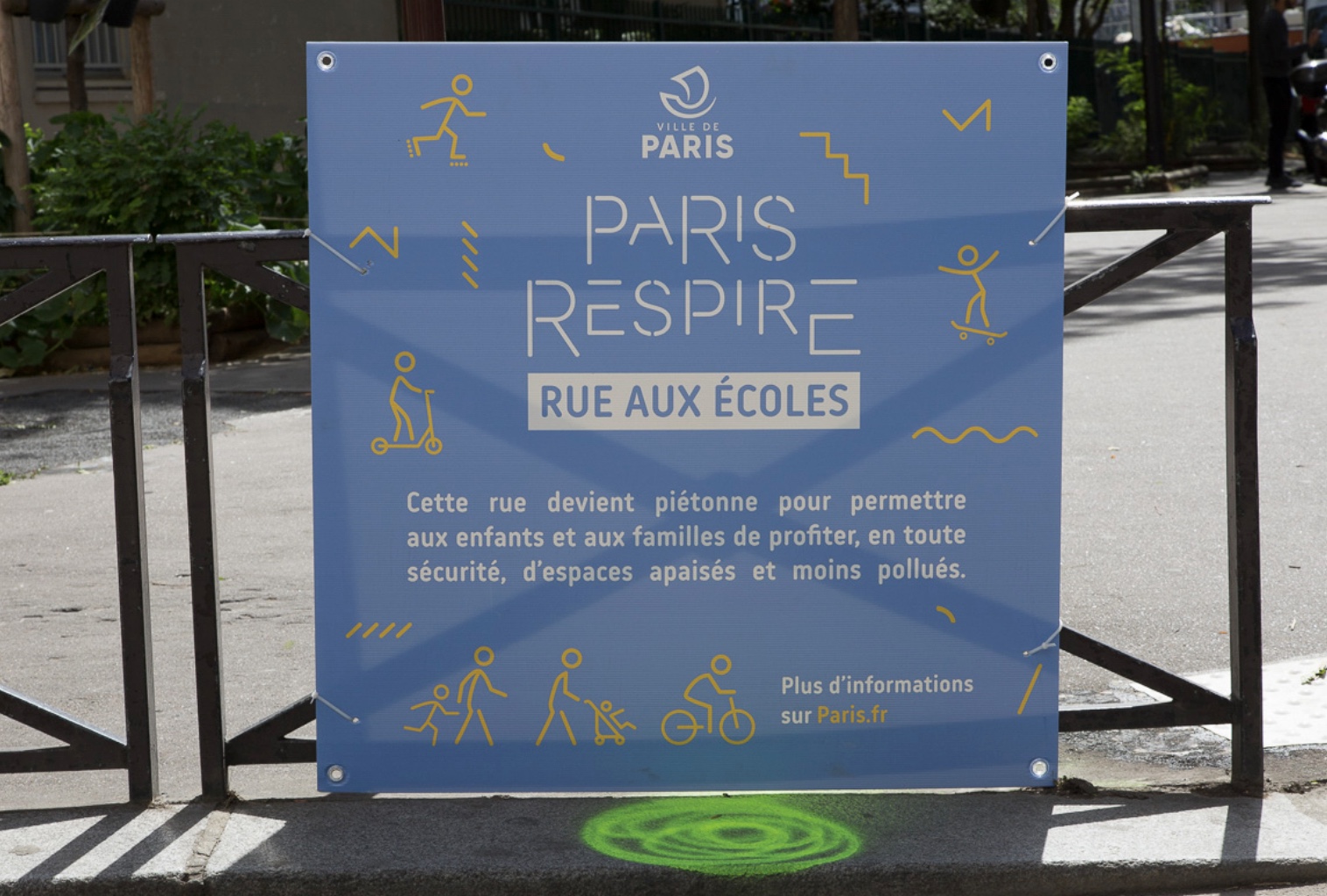
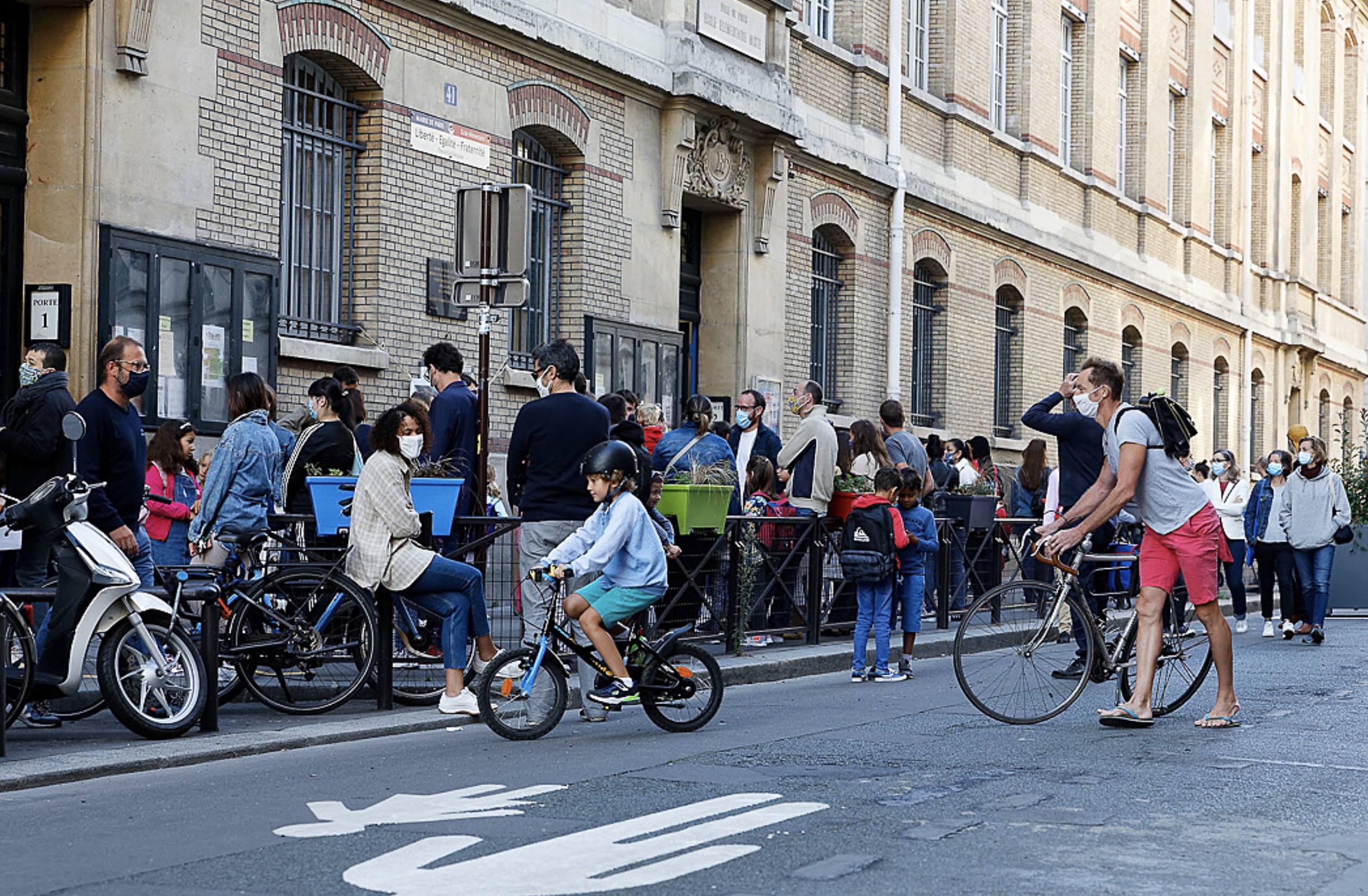

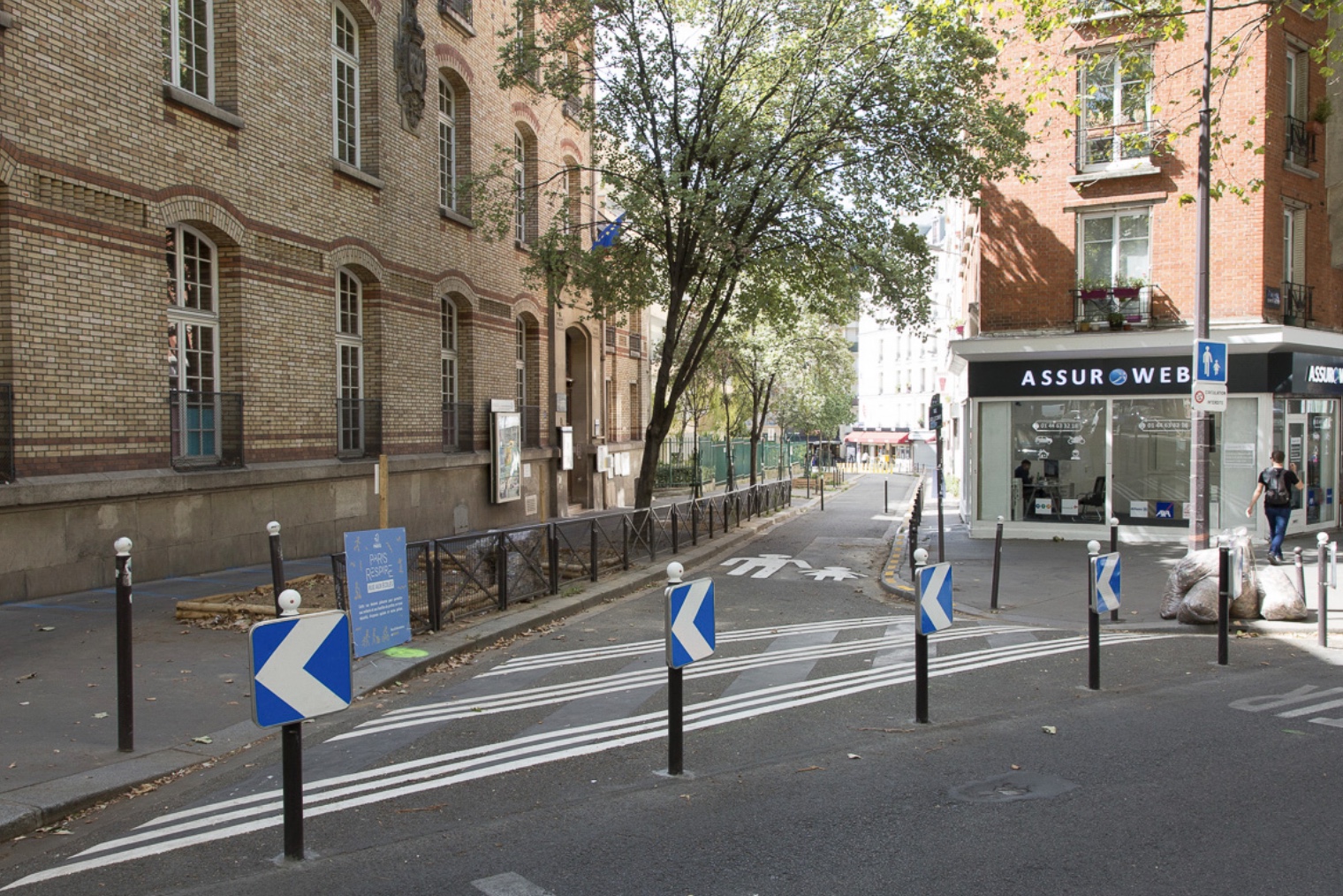
(Photos: Christophe Belin / City of Paris)
Beyond calling them by a slightly different “Streets to Schools” moniker, the program in Paris is essentially the same in spirit to what Portland is doing.
According to the city’s official website Paris announced their program back in July and has rolled it out to 59 streets citywide. (Paris has effectively prohibited driving on about 150 streets since summer 2020.)
Here’s how they define the program (translated from French, so blame Google for errors):
The “streets to schools” consist of total or partial pedestrianization around nursery and primary schools. They are intended to secure the home-to-school path for children, but also to fight against pollution by eliminating the passage of motorized vehicles when possible. When traffic cannot be completely cut off, the street is now a pedestrian area, which means that only certain vehicles can circulate at walking speed, with pedestrians having priority on the roadway.The passage of emergency vehicles, transport of disabled people and delivery remains assured.
As you can see in the photos, the Paris approach is much more robust than Portland’s. They have more aggressively reclaimed the road space by using more permanent diverters and more robust materials and signage.
Given the direction of PBOT over the past year, the success of their plazas and patio program, and the strong priority on carfree space from our commissioner-in-charge, I’d like to think Portland will follow Paris’s lead.
Stay tuned.



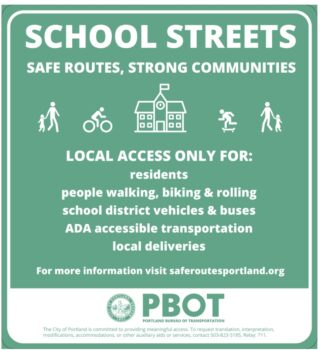

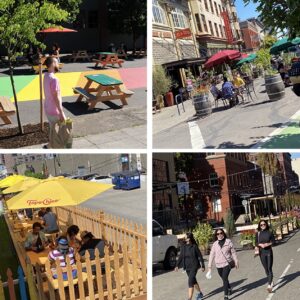
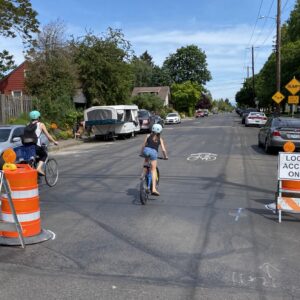

Thanks for reading.
BikePortland has served this community with independent community journalism since 2005. We rely on subscriptions from readers like you to survive. Your financial support is vital in keeping this valuable resource alive and well.
Please subscribe today to strengthen and expand our work.
PBOT is anemic and pathetic.
Great, just what I need, more reasons to feel inferior to Europeans…. 😉
I wonder how much affect it has on public opinion that the French school year is nearly year-round. Thus the time spent as an angry motorist staring down an empty school street during summer break and longing to be free from traffic is reduced.
As a twice daily observer of one of the elementary schools in this program, I can say that respect for the “street closed” signs has steadily eroded over the school year, as parents, Amazon drivers, etc. realize there is no enforcement. In fact, parents picking up/dropping off are doing horrible parking jobs way off the curb because there is less traffic. The school has an official drop zone on another street, but the school bus zone in the closed block is a magnet for the lazy/rushed parent, and without enforcement, will only get worse.
I also daily see a middle school not in this program that is the most chaotic school/ public street interaction zone I’ve ever seen. The contrast definitely helps me realize that anything is better than nothing, and also realize that no change will happen without leadership within the particular school.
Here’s a quick vid of the physically separated bike system Paris has installed in the last ten years. Putting in at network of PBLs naturally resulted in a huge increase in the number of people who bike. PBOT needs a plan for a protected network. Right now it is rudderless.
The Portland example looks a lot like what San Francisco has managed to offer. …. Not much.
https://medium.com/@het.pakhuis/is-san-francisco-ready-for-a-school-street-fca8c5012a65?sk=c8b767650735b4638939fb726ec54beb